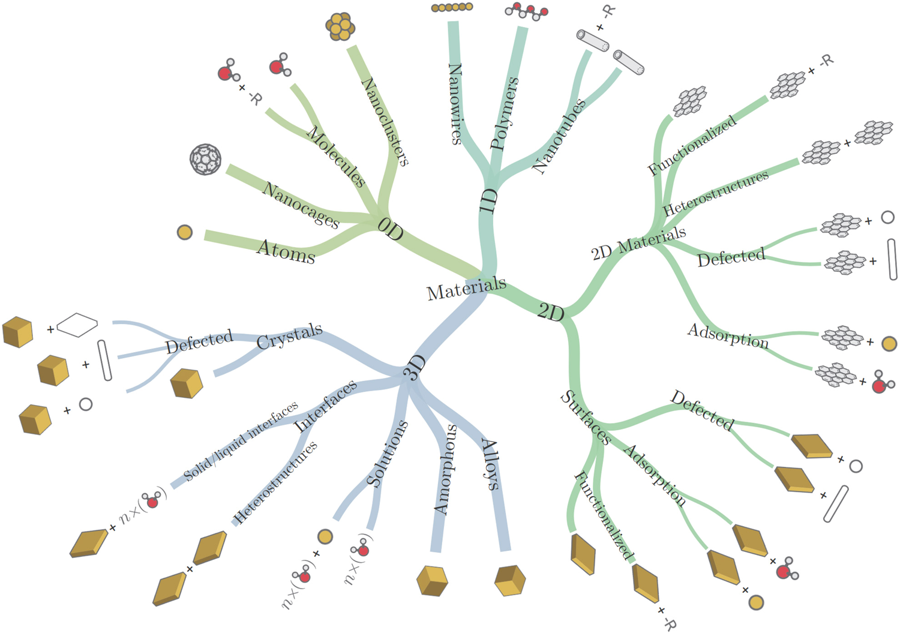CEST and SIN publish new paper on npj Computational Materials
New paper on npj Computational Materials - Lauri Himanen, Patrick Rinke and Adam Foster, Materials structure genealogy and high-throughput topological classification of surfaces and 2D materials, npj Comput. Mater., Vol. 4, 52 (2018).
Materials structure genealogy and high-throughput topological classification of surfaces and 2D materials, Lauri Himanen, Patrick Rinke and Adam Foster, npj Comput. Mater., Vol. 4, 52 (2018).

Automated and verifiable structural classification for atomistic structures is becoming necessary to cope with the vast amount of information stored in various computational materials databases. Here we present a general recursive scheme for the structural classification of atomistic systems and introduce a structural materials map that can be used to organize the materials structure genealogy. We also introduce our implementation for the automatic classification of two-dimensional structures, especially focusing on surfaces and 2D materials. This classification procedure can automatically determine the dimensionality of a structure, further categorize the structure as a surface or a 2D material, return the underlying unit cell and also identify the outlier atoms, such as adsorbates. The classification scheme does not require explicit search patterns and works even in the presence of defects and dislocations. The classification is tested on a wide variety of atomistic structures and provides a high-accuracy determination for all of the returned structural properties. A software implementation of the classification algorithm is freely available with an open-source license.
Read more news

DeployAI Partners Gather for Heart Beat Meeting in Helsinki
The European DeployAI project's partners gathered for the Heart Beat meeting hosted by Aalto University Executive Education in Helsinki.
Get to know us: Associate Professor Maria Sammalkorpi
Sammalkorpi received her doctorate from Helsinki University of Technology 2004. After her defence, she has worked as a researcher at the Universities of Princeton, Yale and Aalto.
Aalto computer scientists in ICML 2024
Computer scientists in ICML 2024